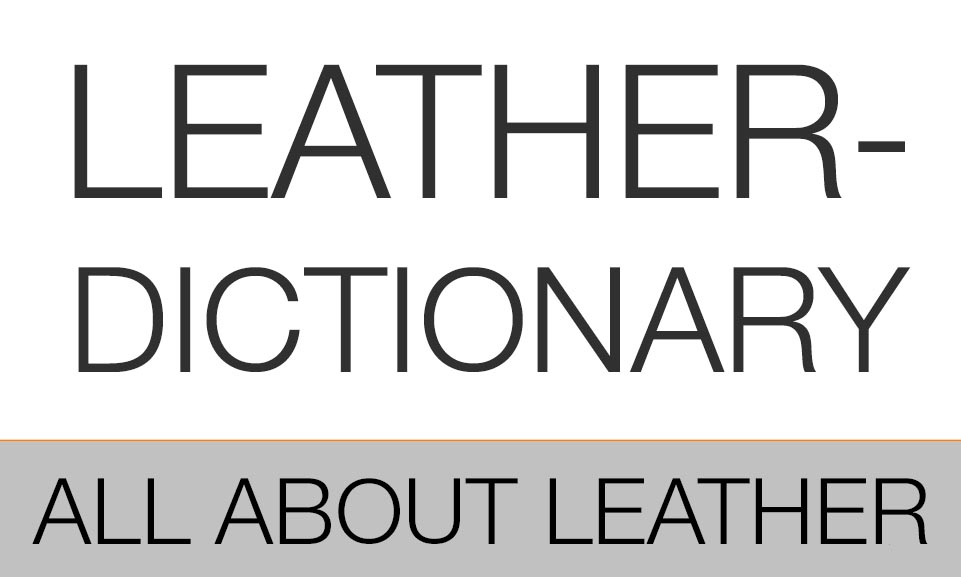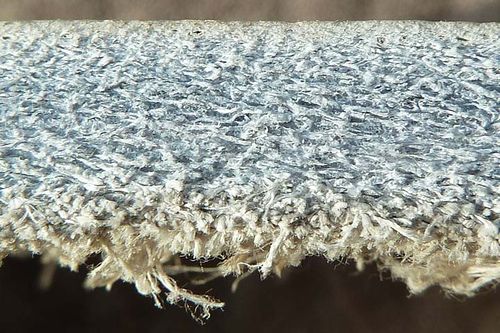Difference between revisions of "Widening shoes"
m |
|||
| Line 4: | Line 4: | ||
| − | New [[leather shoes|shoes]] or [[leather boots|boots]] can be too tight, causing | + | New [[leather shoes|shoes]] or [[leather boots|boots]] can be too tight, causing pain and an increase in severity of symptoms for bunions, ingrown toenails etc . Ensuring you purchase the right size and type of shoe for your feet is therefore very important and the obvious solution to avoid such issues. However, most shoe leather can be softened or stretched a little bit to relieve some of the discomfort. |
| − | [[leather shoes|Footwear upper leather]] is made of solid, [[Thickness of leather|thick]] [[Cow leather|cowhide leather]]. Therefore, there is only limited scope to soften and | + | [[leather shoes|Footwear upper leather]] is made of solid, [[Thickness of leather|thick]] [[Cow leather|cowhide leather]]. Therefore, there is only limited scope to soften and gain more surface area by stretching. When viewed under a microscope, it can be observed that leather is a braid of multiple fibres. One gram of leather has an internal surface of up to 300 m² mainly as its fine fibres are strongly interlinked. Hence, leather has a [[leather quality|high resistance]] to tearing and bending. |
| Line 16: | Line 16: | ||
<p> </p> | <p> </p> | ||
| − | ==Stretching shoes and liquid | + | ==Stretching shoes and liquid shoe stretch sprays== |
| − | [[Tanner|Tanners]] and shoemakers uses various tools and methods to make | + | [[Tanner|Tanners]] and shoemakers uses various tools and methods to make leather more flexible or softer. |
| − | The | + | The braid of fibres can be loosened by stretching. The [[tanner]] does this by using a [[softening|staking machine]]. The shoemaker has several options. By using machinery, tools and knocking, the fibre structures are stretched or torn microscopically, causing the leather to become softer and gain some surface. Getting this done professionally ensures the necessary stability of the leather is maintained. |
| − | In addition, | + | In addition, moistening the leather also helps to stretch it. Moistening the leather softens and swells the fibre braid allowing the leather to deform more easily and [[Formed leather|more permanently]]. |
| Line 35: | Line 35: | ||
In case of shoes which only lightly press, the shoes should be used. It is best to walk about 1 hour with the shoes and try again. Wear thick socks to support the stretching. But not too thick. Otherwise the leather could be overstretched and the shoe becomes too big. | In case of shoes which only lightly press, the shoes should be used. It is best to walk about 1 hour with the shoes and try again. Wear thick socks to support the stretching. But not too thick. Otherwise the leather could be overstretched and the shoe becomes too big. | ||
| − | + | Wearing slightly wet socks is often recommended. The slight moisture ensures the leather is additionally pre-softened making it easier to [[Formed leather|deform]]. But beware! Too much moisture can cause stains! | |
| Line 45: | Line 45: | ||
<p> </p> | <p> </p> | ||
| − | There are many myths about | + | There are many myths about "moistening". For example, it is recommended to "pee" into the shoes or boots. Many shoe forums recommend alcohol, shoe shine sprays from specialist retailers, special oils and many other liquids. The rumour that urine is particularly good is wrong. Any kind of moisture makes leather softer. "Water" would always be better than urine. Alcohol is not suitable at all because fats in the leather get dissolved by alcohol and the leather loses its suppleness. |
| − | Never dry too hot! Do not put wet shoes on the heater. As a result of the heating, the fibre braid sticks and the leather becomes hard and can [[Shrunken leather - leather shrinkage|shrink]] at | + | Never dry too hot! Do not put wet shoes on the heater. As a result of the heating, the fibre braid sticks and the leather becomes hard and can [[Shrunken leather - leather shrinkage|shrink]] at high temperatures. The fibre braid can then only be loosened again by a strong expenditure of force, and the fibre structure can also suffer due to this. |
| − | + | A relatively new method involves placing a plastic bag in the shoe that is filled with water and then kept in the freezer compartment. By the expansion of the water during the transformation into solid ice, strong pressure is exerted on the upper material of the shoe. This idea is mainly recommended from online mail order businesses wanting to significantly reduce their return rate. | |
| Line 60: | Line 60: | ||
| − | The described methods only work when the leather is | + | The described methods only work when the leather is not too tight. Definitely too tight shoes or with completely wrong fit cannot be saved. Then the leather can even tear through the use of force to make it softer and expand. Heat should not be used because too high heat [[Shrunken leather - leather shrinkage|shrinks leather]]. |
Revision as of 13:24, 5 February 2017
New shoes or boots can be too tight, causing pain and an increase in severity of symptoms for bunions, ingrown toenails etc . Ensuring you purchase the right size and type of shoe for your feet is therefore very important and the obvious solution to avoid such issues. However, most shoe leather can be softened or stretched a little bit to relieve some of the discomfort.
Footwear upper leather is made of solid, thick cowhide leather. Therefore, there is only limited scope to soften and gain more surface area by stretching. When viewed under a microscope, it can be observed that leather is a braid of multiple fibres. One gram of leather has an internal surface of up to 300 m² mainly as its fine fibres are strongly interlinked. Hence, leather has a high resistance to tearing and bending.
Leather in cross-section. The fibre structure is extremely dense and therefore stable.
Stretching shoes and liquid shoe stretch sprays
Tanners and shoemakers uses various tools and methods to make leather more flexible or softer.
The braid of fibres can be loosened by stretching. The tanner does this by using a staking machine. The shoemaker has several options. By using machinery, tools and knocking, the fibre structures are stretched or torn microscopically, causing the leather to become softer and gain some surface. Getting this done professionally ensures the necessary stability of the leather is maintained.
In addition, moistening the leather also helps to stretch it. Moistening the leather softens and swells the fibre braid allowing the leather to deform more easily and more permanently.
A shoemaker explains the possibility of leather stretching in shoes and boots.
Therefore, there are several ways to make shoe leather softer:
In case of shoes which only lightly press, the shoes should be used. It is best to walk about 1 hour with the shoes and try again. Wear thick socks to support the stretching. But not too thick. Otherwise the leather could be overstretched and the shoe becomes too big.
Wearing slightly wet socks is often recommended. The slight moisture ensures the leather is additionally pre-softened making it easier to deform. But beware! Too much moisture can cause stains!
Shoes can be painfully tight.
There are many myths about "moistening". For example, it is recommended to "pee" into the shoes or boots. Many shoe forums recommend alcohol, shoe shine sprays from specialist retailers, special oils and many other liquids. The rumour that urine is particularly good is wrong. Any kind of moisture makes leather softer. "Water" would always be better than urine. Alcohol is not suitable at all because fats in the leather get dissolved by alcohol and the leather loses its suppleness.
Never dry too hot! Do not put wet shoes on the heater. As a result of the heating, the fibre braid sticks and the leather becomes hard and can shrink at high temperatures. The fibre braid can then only be loosened again by a strong expenditure of force, and the fibre structure can also suffer due to this.
A relatively new method involves placing a plastic bag in the shoe that is filled with water and then kept in the freezer compartment. By the expansion of the water during the transformation into solid ice, strong pressure is exerted on the upper material of the shoe. This idea is mainly recommended from online mail order businesses wanting to significantly reduce their return rate.
Stretching of shoes using the freezing method.
The described methods only work when the leather is not too tight. Definitely too tight shoes or with completely wrong fit cannot be saved. Then the leather can even tear through the use of force to make it softer and expand. Heat should not be used because too high heat shrinks leather.
Additional information










 a kotori web solution
a kotori web solution